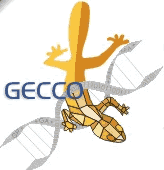

June 26 - 30, 2004
Saturday to Wednesday
Seattle, Washington, USA
Session: |
BIO - Biological Applications of Evolutionary Computation |
Title: |
What Might Evolutionary Algorithms (EA) and Multi-Objective Optimization (MOO)Contribute to Phylogenetics and the Total Evidence Debate |
Authors: |
Leon Poladian |
Abstract: |
Evolutionary relationships among species are usually illustrated by means of a phylogeny and inferred by optimising some measure of fitness, such as the total evolutionary distance between species (given the tree), the parsimony (number of different assumptions required to fit the data to the tree), the likelihood of the tree (given an evolutionary model and a data set) or the posterior probability of the tree (given an evolutionary model, a data set, and the distribution of prior probabilities). A large variety of different types of data can and have been used in reconstructing evolutionary relationships including nucleotide sequences, anatomical features, metabolic processes, behaviour or even the words of languages. Difficulties arise when different sources of evidence provide conflicting information about the inferred `best' tree(s). The Total Evidence Debate focusses on how to assess, combine, modify or reject different types of data. We begin with a review of evolutionary algorithms (EA) used for phylogenetic inference. Then we discuss whether the population-based searches that are an intrinsic attribute of EA and multi-objective optimisation (MOO) can provide a powerful new approach to this area. |
HomeProgramSearchAuthor Index
SponsorsCommitteeContact Us
